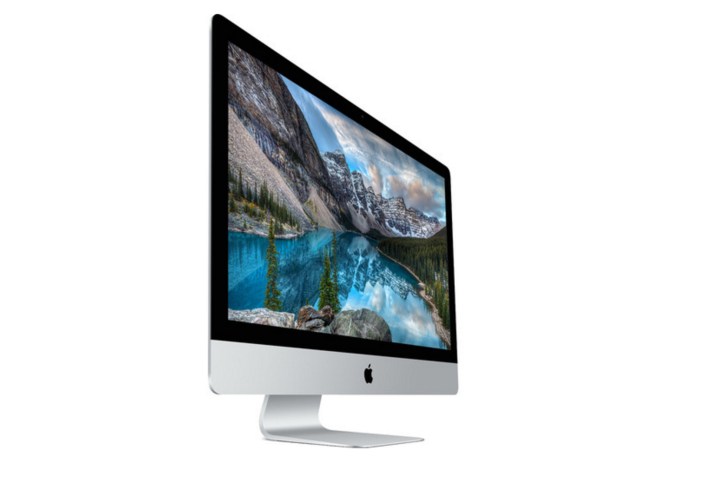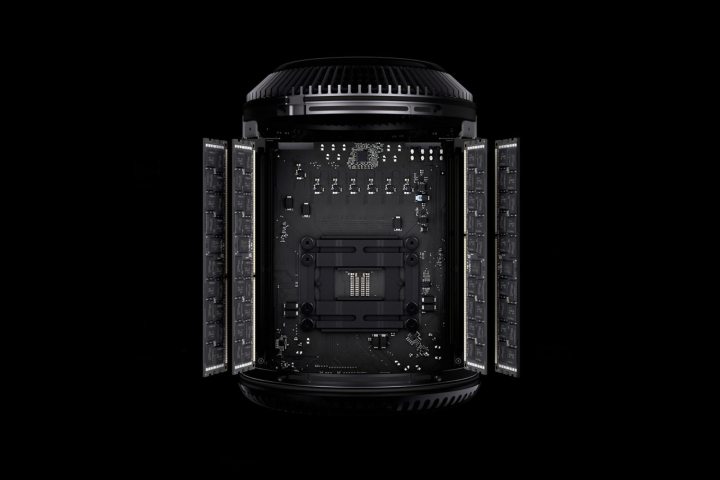We haven’t seen a true Apple display for a while. Specifically, since mid-2016, when Apple discontinued its 27-inch Thunderbolt Display.
Now it looks like Apple is ready to introduce a new display, one that’s ready to work with upcoming releases like the rumored 2019 Mac Pro. But what’s this new display going to look like, and will it be worth choosing over the many other monitor options on the market? Here’s everything we know about Apple’s plans.
Price and release date

We don’t have any indication of pricing for a new display, but if the rumored specs are close to being accurate, then it’s going to be expensive. This is likely to be a high-resolution screen targeted at professionals, so a price point around a few thousand dollars wouldn’t be unexpected. For reference, the older LG UltraFine 5k, made specifically for Apple, is selling for $1,300.
However, if Apple is serious about pairing the display up with the new Mac Pro (which we’ll discuss more below), then it could easily announce the display at the same time as the Pro. This gives us a couple of different options for a release. Mac Pros are traditionally announced at WWDC in June 2019, so this could be an opportune time — although there’s no current evidence that the Pro will be present quite yet. The other option is for Apple to hold a special event and announce in the fall, just in time for holiday shopping.
Get ready for an incredible resolution

Apple’s aiming here on this point. Pike’s Universum, a blog that has made accurate Apple predictions in the past, dropped a post in 2017 that said the new Apple Display would have an 8K resolution. Dell has an 8K monitor out with a 7680 x 4320 resolution, and its selling for around $4,800, which gives you an idea about just how expensive the new Apple Display could be.
However, more recent reporting by Ming-Chi Kuo reports that the Display will be a more modest 6K with a mini-LED backlighting system. This lower resolution is still very high-end, but will help keep prices down so the monitor will be more available for a wider audience.
Leaked image shows familiar design
Have you seen the Getting started guide on the new Mac Mini? It shows the display we all want ????♂️ pic.twitter.com/M2Tf0xfUOB
— Jonatan ???? (@jonatan) November 2, 2018
When Apple announced the new Mac mini, it sent out a number of models to reviewers for a first look. That included a Getting Started guide, but reviewers were quick to notice that this guide included a page with an Apple Display on it. Not only had Apple stopped making its own displays two years ago, but this display had a different look from past displays and iMacs, leading many to assume that it was a picture of an upcoming display Apple.
If this is a leak (Getting Started guides have done this before), then it tells us a few things about the new display. Most importantly, it has far thinner bezels than past models for an edge-to-edge design that saves on space and follows a similar trend to the 2018 MacBook. Otherwise, the design is still very reminiscent of designs for the Thunderbolt Display and the iMac models, suggesting that Apple isn’t trying to completely reinvent the wheel for this model.
As for the screen size, Apple analyst Ming-Chi Kuo reports that it is going to be 31.6 inches, an particularly large model for those who need as much display space as possible for their work.
Designed for the Mac Pro

Back in 2017, Phil Schiller, Apple SVP of worldwide marketing at the time, told reporters that, “Since the Mac Pro is a modular system, we are also doing a pro display.” Apple has not contradicted this statement in the following year and a half, so it’s reasonable to assume this is still the case.
That means that there is a new Apple Display in the works, and it’s being designed with the Mac Pro and similar systems in mind. That means it’s likely to have a focus on professional design work, editing, and related applications that require a high-end monitor. Apple also intends for this display to easily fit into the “modular” approach to the Mac Pro, which says that it should work well with Apple devices in more complex arrangements. Screen-sharing and similar features may be a focus.
Thunderbolt isn’t going anywhere

Since Thunderbolt 3 and USB-C can be the same port, there’s no reason to think this new display won’t have Thunderbolt connectivity. In fact, it’s likely to have multiple
As for other ports, well, the display could include more generic USB-C ports, and HDMI is always an option to help increase usability.
An integrated GPU is still a possibility

When the last Thunderbolt Display was discontinued, a rumor sprang up that Apple’s new display would include an integrated GPU. There haven’t been any follow-up rumors to this report, but it would be an interesting move for Apple.
It would also signify a display made to work with all sorts of Apple products without as many challenges — such as the new Mac mini or MacBooks. This could certainly happen if that’s the direction Apple wants to push.
Editors' Recommendations
- Everything you need to know about buying a GPU in 2024
- What is YouTube Music? Everything you need to know
- What is SATA? Here’s everything you need to know about it
- Shopping at Apple this holiday season? You should know this
- What is NVMe? Everything you need to know about high-speed storage




